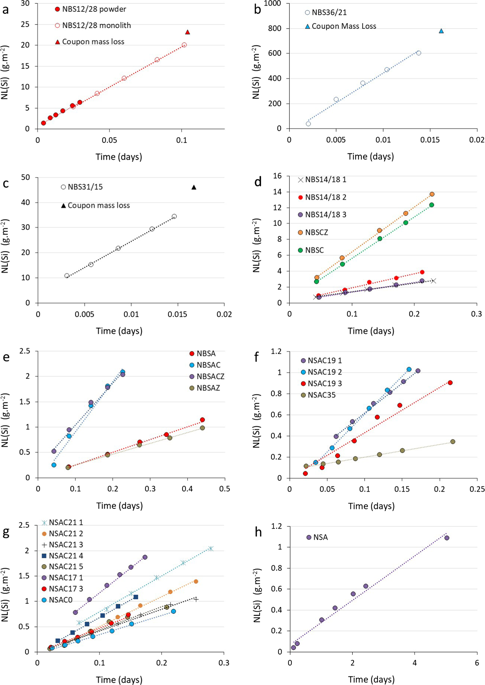npj Materials Degradation ( IF 6.6 ) Pub Date : 2020-03-16 , DOI: 10.1038/s41529-020-0111-4 Stéphane Gin , Mengyi Wang , Nicolas Bisbrouck , Mélanie Taron , Xiaonan Lu , Lu Deng , Frédéric Angeli , Thibault Charpentier , Jean-Marc Delaye , Jincheng Du , Mathieu Bauchy

|
Tuning glass composition to obtain targeted properties generally relies on empirical approaches. However, a deep understanding of the physical and chemical mechanisms linking glass composition to its structure and properties would enable developing reliable predictive models. Indeed, although empirical models are usually able to interpolate composition–property relationships within a given compositional envelope, they often fail at extrapolating predictions far from their training domain. Here, as an alternative route to empirical models, we show that a structural descriptor based on the number of topological constraints per atom can be used to predict the initial dissolution rate of aluminosilicate and borosilicate glasses after being parameterized on different families of glasses (specific series of borosilicate glasses). Sixteen glasses belonging to these families were studied and their initial dissolution rates were determined at 90 °C and pH90 °C = 9, covering rates spanning over 5 orders of magnitude. The model based on topological constraints was trained based on seven select borosilicate glasses (R2 = 0.997) and used to predict the dissolution rate of nine additional borosilicate and aluminosilicate glasses. We show that, provided that corrections are made for high alkali content glasses that dissolve incongruently (preferential release of Na), the model gives reasonable predictions, even far from its training domain.
中文翻译:

一个简单的基于拓扑约束的模型可以预测硼硅酸盐和铝硅酸盐玻璃的初始溶解速率吗?
调整玻璃组成以获得目标性能通常依赖于经验方法。但是,对将玻璃成分与其结构和性质联系起来的物理和化学机理的深入了解将有助于开发可靠的预测模型。确实,尽管经验模型通常能够在给定的成分范围内内插成分-属性关系,但它们常常无法在远离其训练领域的情况下推断预测。在这里,作为经验模型的替代方法,我们表明基于每个原子的拓扑约束数量的结构描述符可用于在不同玻璃系列(特定系列)上进行参数化后,预测铝硅酸盐和硼硅酸盐玻璃的初始溶解速率硼硅酸盐玻璃)。90°C = 9,覆盖率超过5个数量级。基于七种选择的硼硅酸盐玻璃(R 2 = 0.997)训练了基于拓扑约束的模型,并用于预测另外九种硼硅酸盐和硅铝酸盐玻璃的溶解速率。我们证明,只要对不相容地溶解(Na优先释放)的高碱含量玻璃进行校正,该模型就可以提供合理的预测,甚至距离其训练范围还很远。











































 京公网安备 11010802027423号
京公网安备 11010802027423号